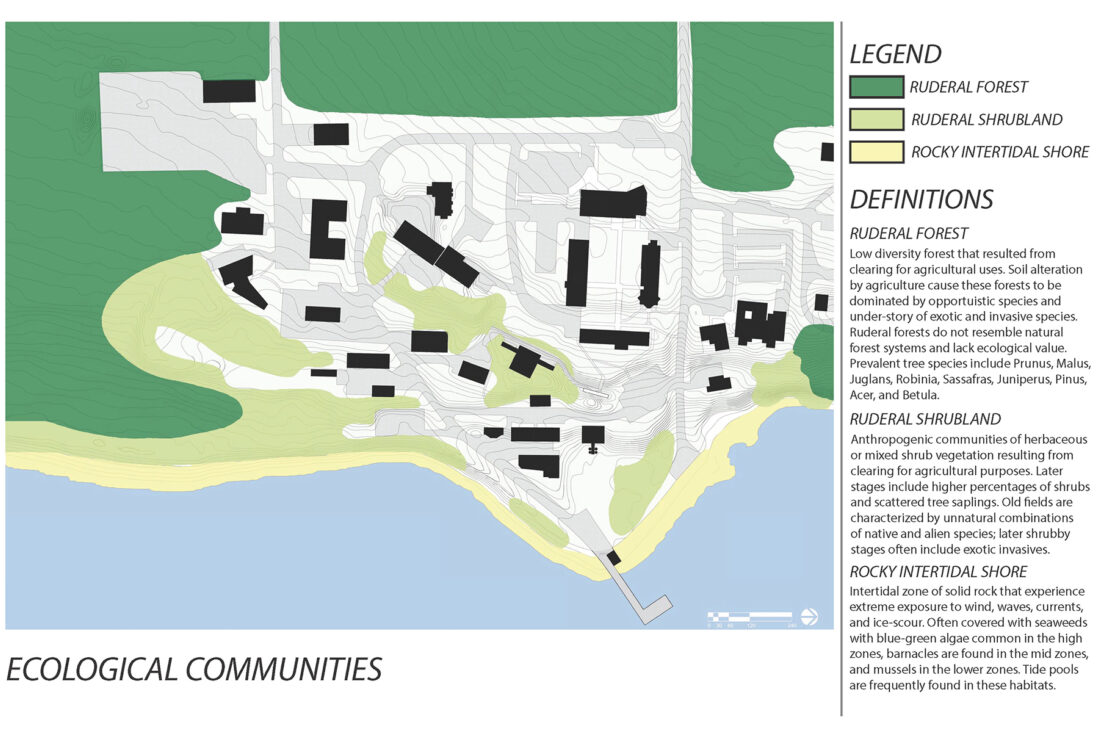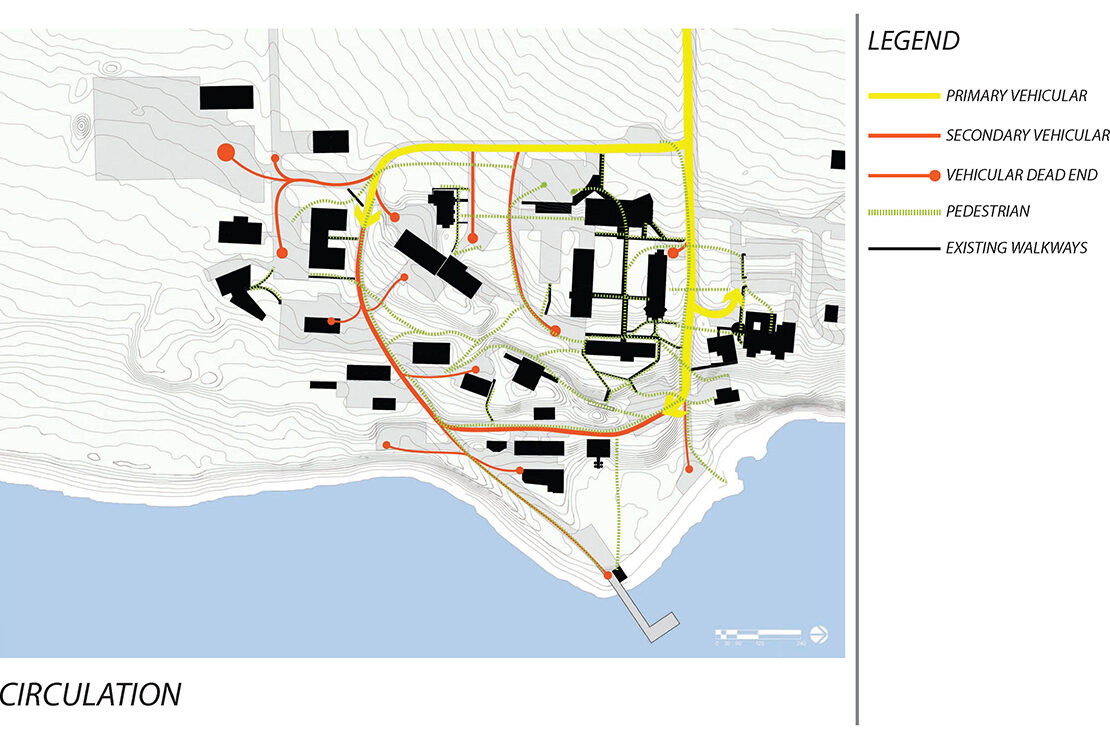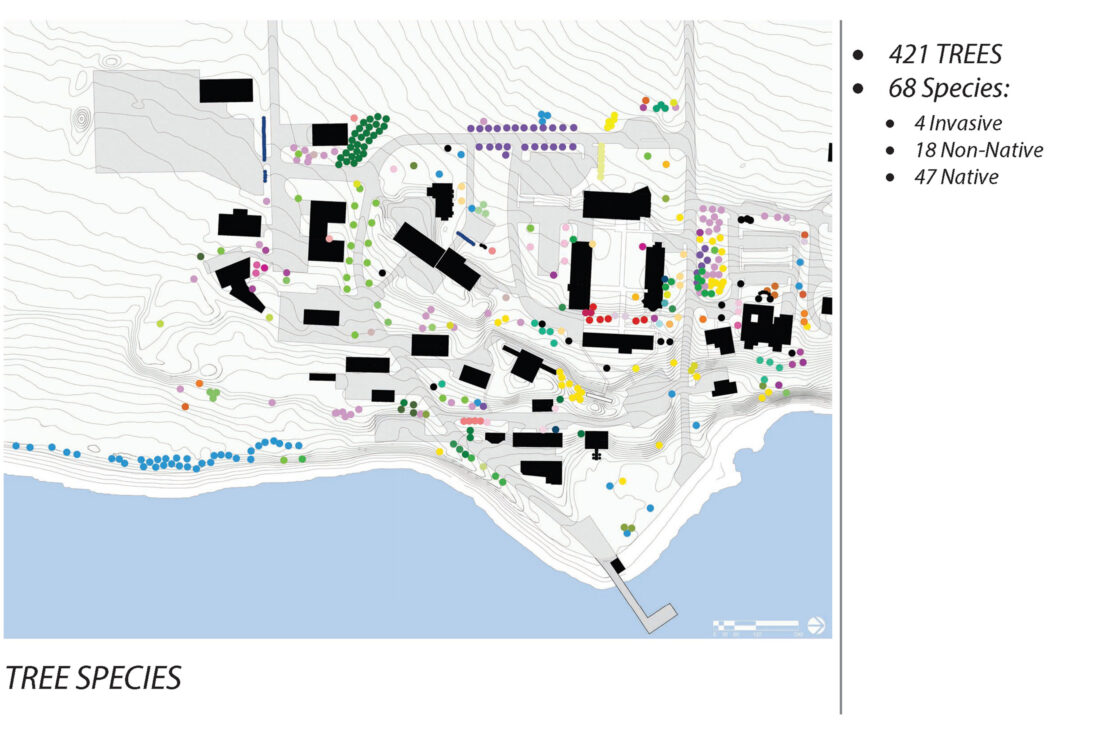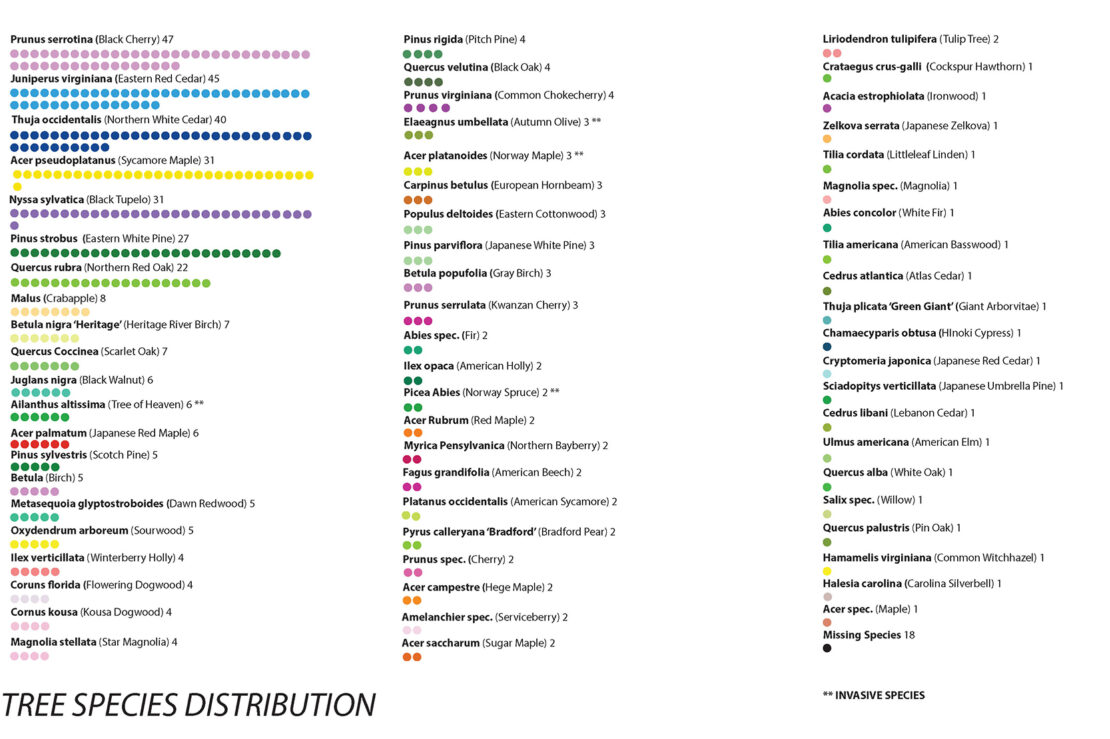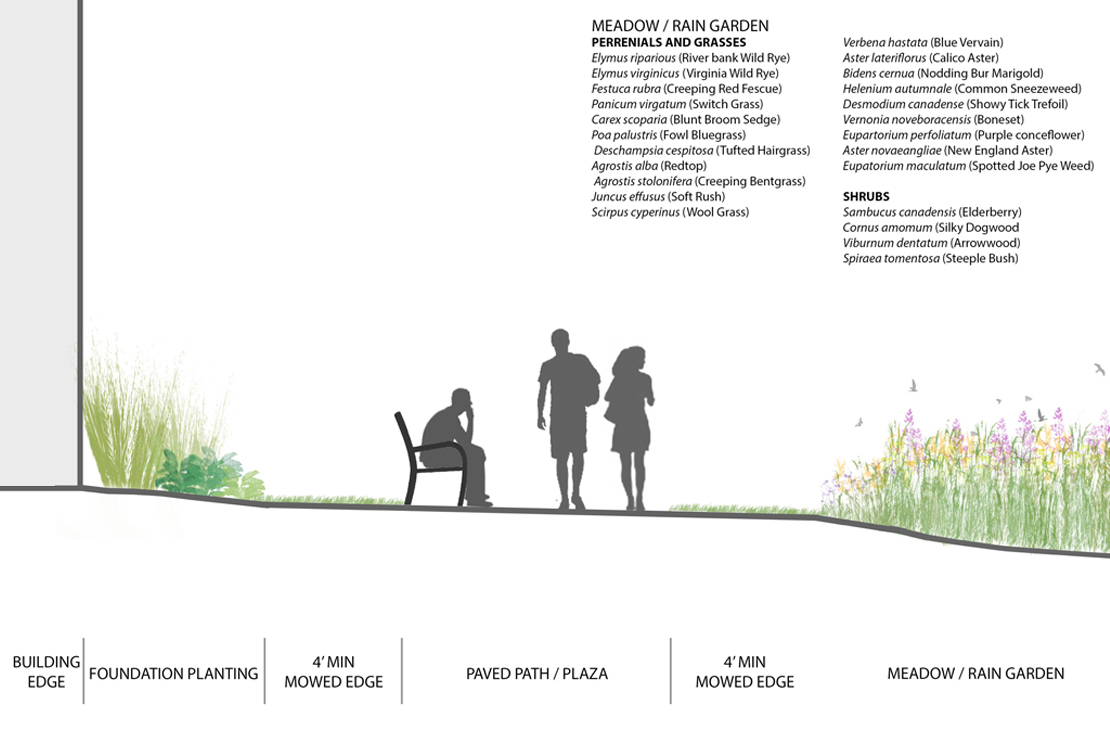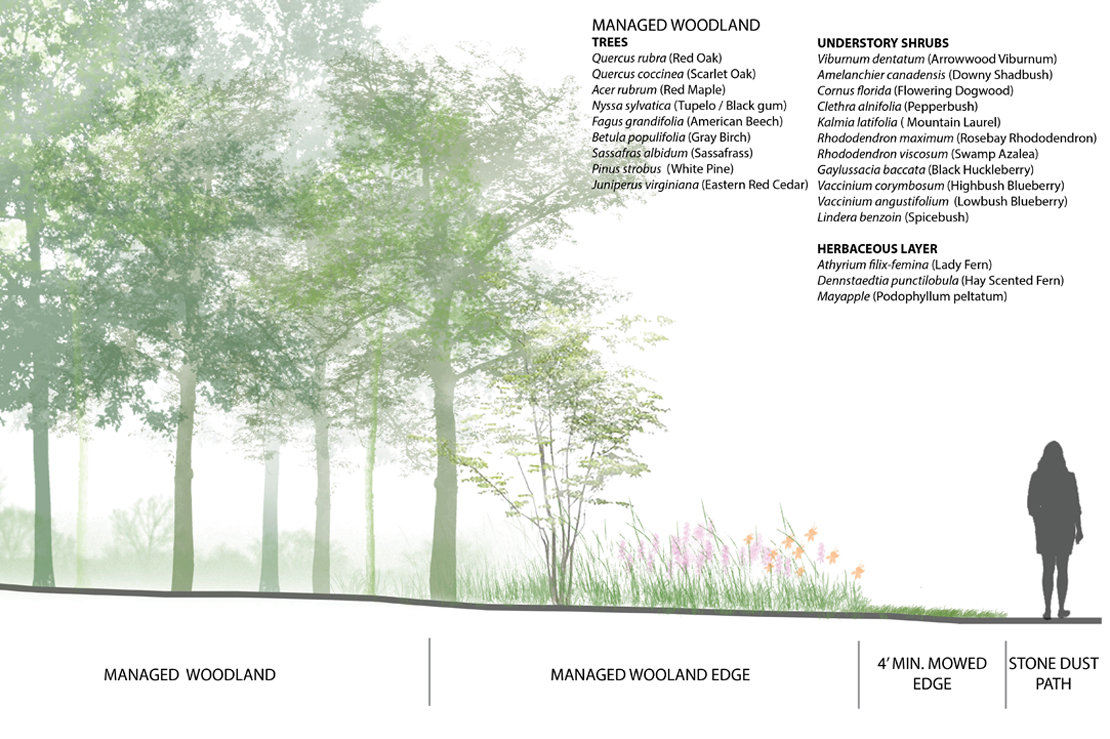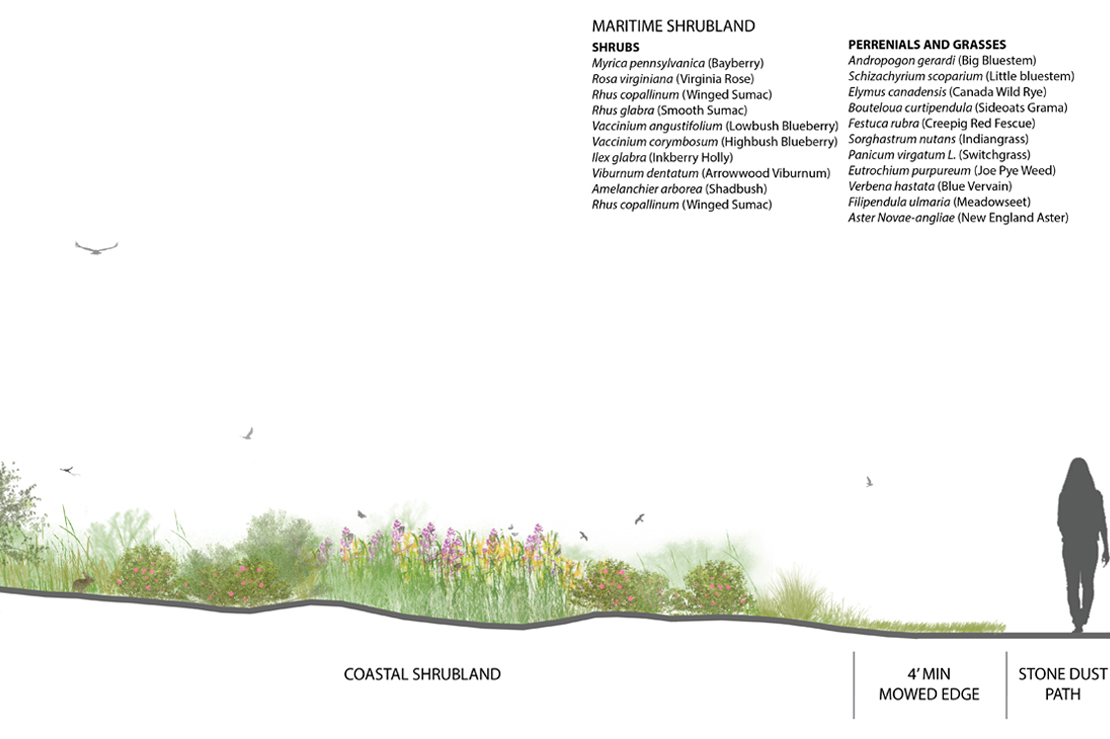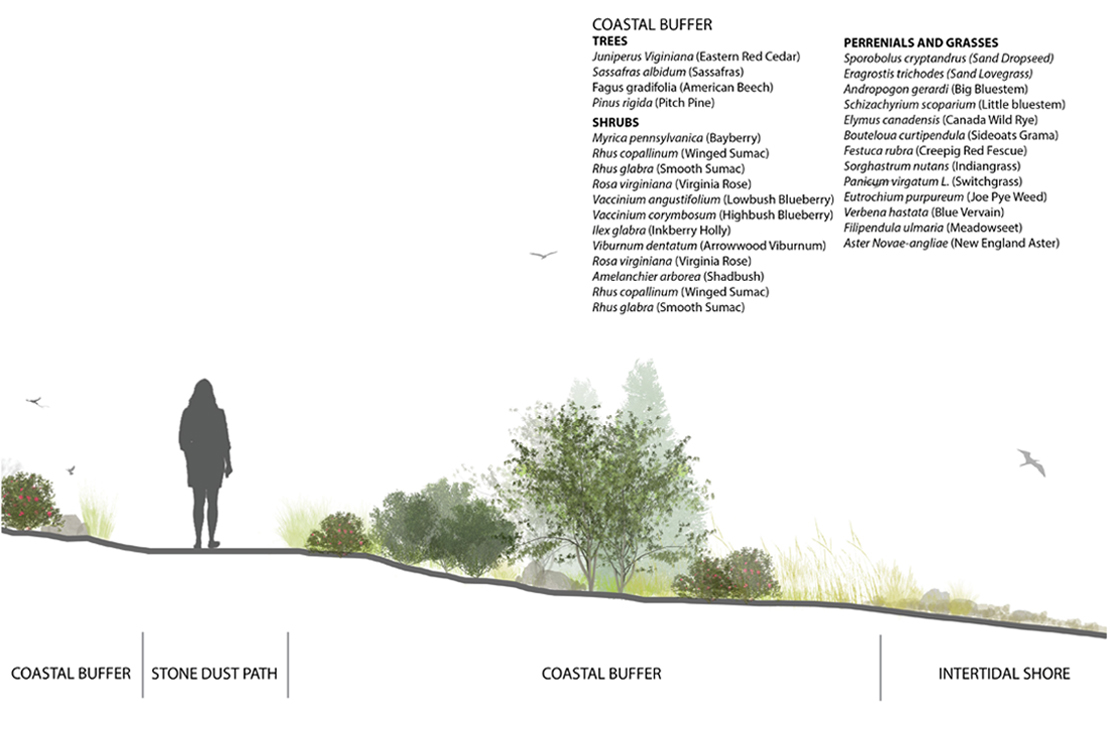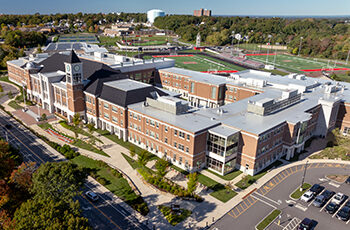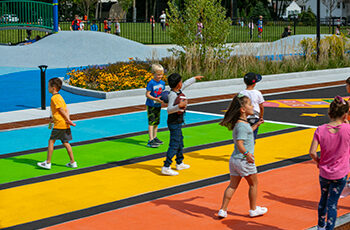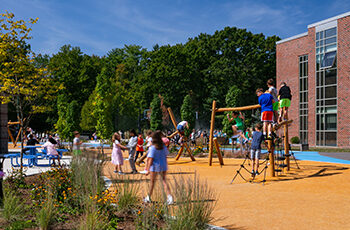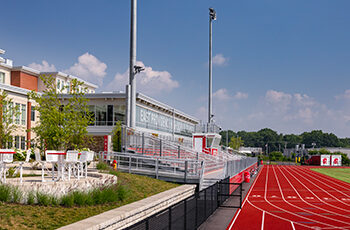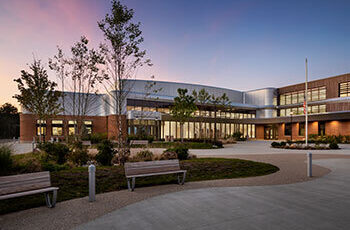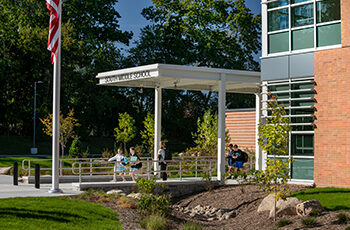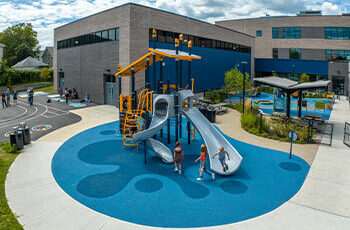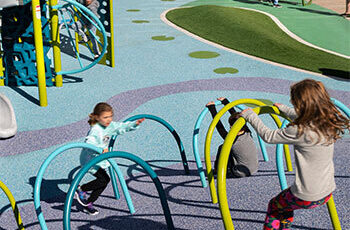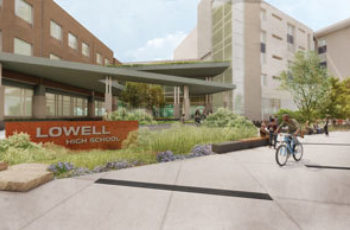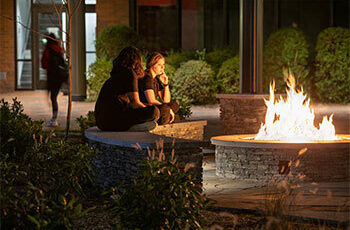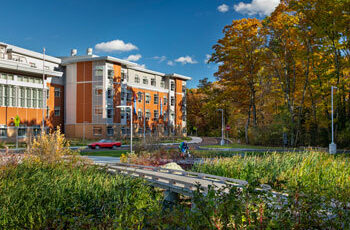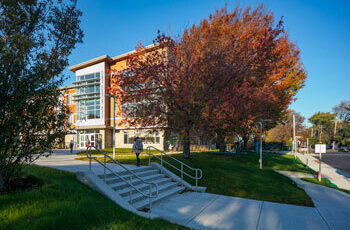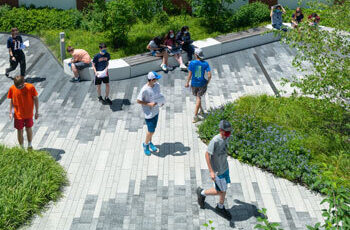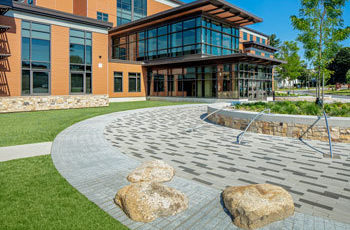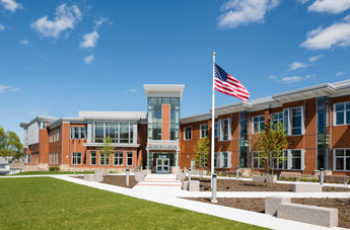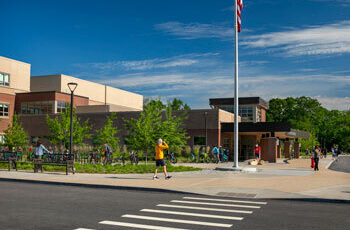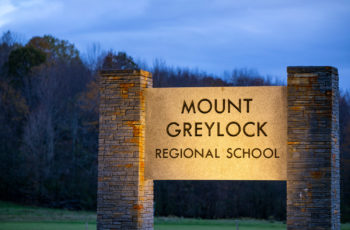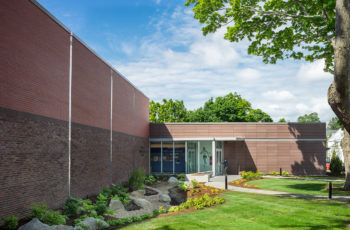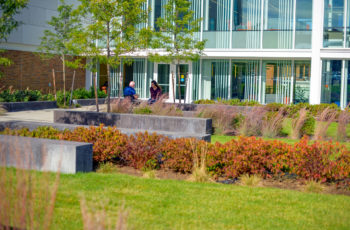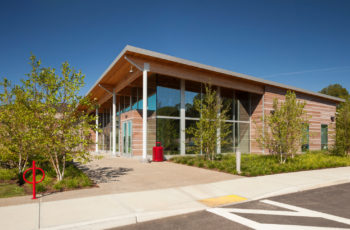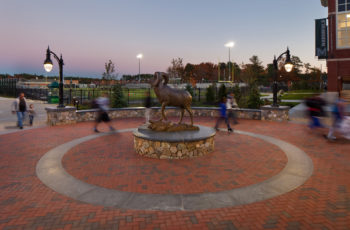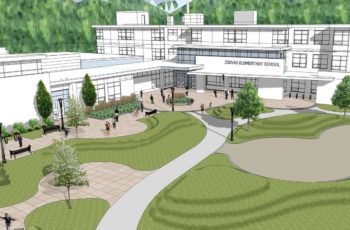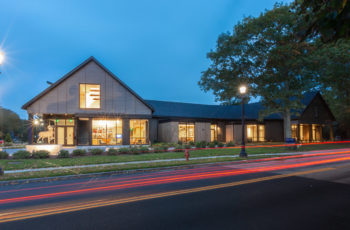Designing Resiliency for the Next Fifty Years
Narragansett, RIOverview
In 2015, the University commissioned the Narragansett Bay Campus Master Plan to assess the current condition of the entire Bay Campus, including buildings, infrastructure, and landscape—and to provide a comprehensive master plan for campus renewal that will serve the University for many years into the future.
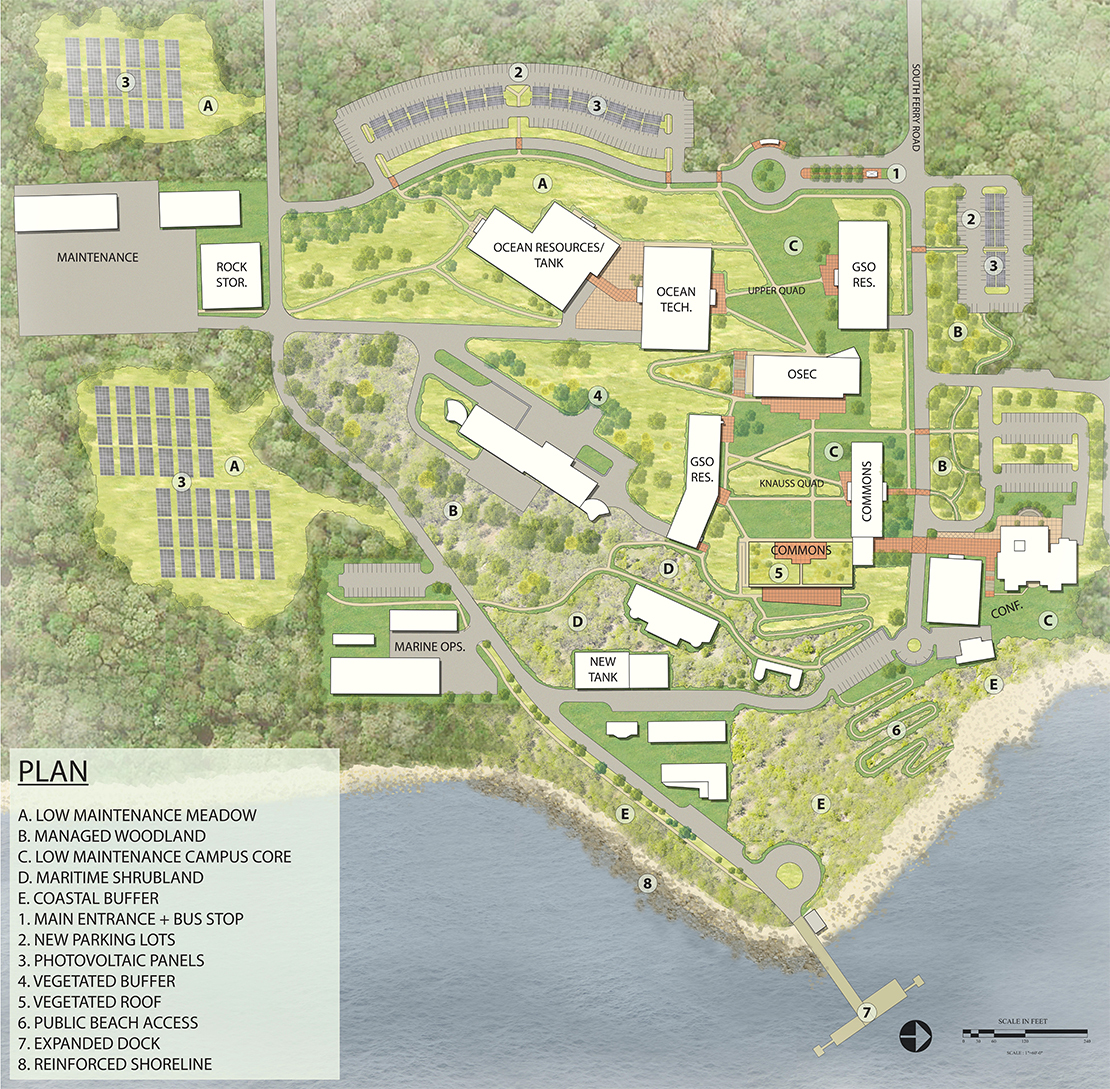
The Challenges
Traverse Landscape Architects, working with a consultant team, was tasked with creating a plan that integrates new and renovated buildings with sustainable energy operations systems, as well as landscape improvements that improve the pedestrian experience and enhance resiliency and ecological function.
The present day campus is marked by extensive areas of impervious surface and intensively maintained areas, a lack of pedestrian-friendly connections, poor way-finding, abundant invasive plant species, and truncated view-sheds that fail to take advantage of the remarkable coastal location.
The Solutions
Traverse conducted a comprehensive analysis that included a tree inventory and an examination of existing circulation, parking, view-sheds, amenities, and site access. From there, a set of goals and strategies were established to guide the campus through future development.
These goals and strategies included reducing impervious areas, eliminating vehicles from the campus core, consolidating parking, restoration of site hydrology, pedestrian-friendly circulation, and the creation of vibrant native plant communities on the site.
One of the focal points of the plan is to improve the campus’s coastal resiliency; recommendations include improving existing infrastructure, drainage, and other utilities, and strategically placing vegetation to create a coastal buffer. The resulting Master Plan charts the course for development of a highly energy-efficient and environmentally responsible design for the Campus over the next 50 years.






